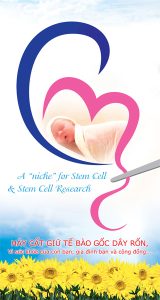Parent’s Guide to Cord Blood, February, 2024
We report on a research development that could lead to increased use of donated cord blood units. At the Dec. 2023 meeting of the American Society of Hematology (ASH), a poster was presented which showed that the 3-year overall survival (OS) was better after a stem cell transplant that combined both cord blood with Haplo-identical bone marrow, as opposed to a “Haplo” transplant alone1. The poster was an early report from a multicenter, randomized, open-label, phase 3 study conducted for 268 patients with AML leukemia at five transplant centers in China (NCT03719534). The 3-year OS was 80.5% (95% CI 73.7-87.9) in the Haplo-cord HSCT group versus 67.8% (95% CI 60.0-76.5) in the Haplo-HSCT group, respectively (p=0.013, see the figure).

To put this in context, readers need to understand that over the past decade Haplo-identical, or half matched, bone marrow transplants are utilized for most of the adult transplants for patients that lack a matched unrelated donor (MUD) in a bone marrow registry. That is to say that Haplo transplants have taken over the segment of the adult transplant market that used to employ cord blood. In the United States, there are over 8000 stem cell transplants from donors per year, with about 25% of adults receiving Haplo transplants2. In China, where the population is more than four times bigger than the United States, there are about 5000 stem cell transplants from donors per year, and about 50% are Haplo transplants3.
At the Institute of Blood and Marrow Transplantation of Soochow University in Suzhou, China, oncologist Depei Wu, MD, is the leader of a team that has been studying the efficacy of Haplo-cord transplants. In addition to their 2023 ASH poster presenting results for 268 patients with AML leukemia, they have published outcomes for 112 patients with B-ALL leukemia in 2022, and 255 patients with Aplastic Anemia in 20221,4,5. In all these patient groups, the addition of cord blood to the Haplo transplant led to statistically significant improvements in overall survival.
Haplo-cord transplants are not new. Back in 2013, this newsletter described a clinical trial in Spain which was the first to demonstrate that outcome measures from Haplo-cord transplants were comparable to MUD transplants6. That result has been confirmed by the Soochow group7. The specific protocol used by the Soochow group for a Haplo-cord transplant is to administer the cord blood stem cell infusion 8 hours before the infusion of Haploidentical bone marrow stem cells. Their primary criterion for selecting the cord blood unit is an HLA match with the patient that is 4 out of 6 or higher. After choosing the best HLA match, the second criterion is to pick the largest unit available. The cord blood doses that patients received in their Haplo-cord studies were typically “small”, with a median dose of 18 million cells per kg, which is 72% of the minimum dose required for a standard cord blood transplant4,5. Hence, adoption of this protocol would provide an opportunity to use the smaller donated cord blood units which are languishing in the inventory of public banks8.
It is too simplistic to think that everybody should start using Haplo-cord transplants on the basis of these studies from the Soochow group, but it is clear that their protocol merits more investigation, at more research centers. In some Asian countries, for example China and India, it is common for oncologists to combine grafts from a bone marrow donor and a cord blood donor when administering stem cell transplants. This is rare in the West, perhaps due to the high price of cord blood units in the public banks in the West8. In those transplant centers that are able to test this protocol, it would be helpful to have more randomized prospective studies of its efficacy. There are many details of the therapy that oncologists need to explore, such as the chemotherapy regimen, the prophylaxis against graft versus host disease, the relative role of the bone marrow donor and cord blood donor, and statistical comparisons of various outcome measures. The answers to these questions could lead to better survival and quality of life for patients, while also increasing utilization of donated cord blood.
References
- Zhou B, Chen J, Liu T, Zhang Y, Ye Y, Ding Y, … Wu D. Poster 1041. Haploidentical Hematopoietic Cell Transplantation Combined with an Unrelated Cord Blood Unit for Adult Acute Myeloid Leukemia Results in Improved Survival Compared to Haploidentical Hematopoietic Cell Transplantation: Results of a Multicenter, Randomized, Phase III Trial. 2023; 142(S1):1041.
- Bolon YT, Atshan R, Allbee-Johnson M, Estrada-Merly N, Lee SJ. Current use and outcome of hematopoietic stem cell transplantation: CIBMTR summary slides, Last updated 2023-08
- Xu L, Chen H, Chen J, Han M, Huang H, Lai Y, …. Huang The consensus on indications, conditioning regimen, and donor selection of allogeneic hematopoietic cell transplantation for hematological diseases in China—recommendations from the Chinese Society of Hematology. J Haematology & Oncology. 2018; 11:33
- Zhou B, Xu M, Lu S, Liu Y, Qi L, Liu T, … Xu Y. Clinical Outcomes of B Cell Acute Lymphoblastic Leukemia Patients Treated with Haploidentical Stem Cells Combined with Umbilical Cord Blood Transplantation. and Cellular Therapy 2022; 28:173.e1-173.e6.
- Lei M, Zhang Y, Jiao W, Li X, Zhou H, Wang Q, … Wu D. Comparison of Haploidentical Hematopoietic Stem Cell Transplant With or Without Unrelated Cord Blood Infusion in Severe Aplastic Anemia: Outcomes of a Multicenter Study. Frontiers Immunology. 2022; 13:912917
- Kwon M. Haplo-Cord Transplants. Parent’s Guide to Cord Blood Foundation Newsletter Published 2013-03
- Xu J, Zhao R, Yang L, Gong H, Ma S, Chen J, … Wu D. Haploidentical stem cells combined with a small dose of umbilical cord blood transplantation exert similar survival outcome of HLA-matched stem cells transplantation in T-cell acute lymphoblastic leukemia. 2020; Bone Marrow Transpl. 55:1197-1199.
- Verter F. RAND Corporation Report on Public Cord Blood Banking Industry. Parent’s Guide to Cord Blood Foundation Newsletter Published 2017-11
Source: Parent’s Guide to Cord Blood









